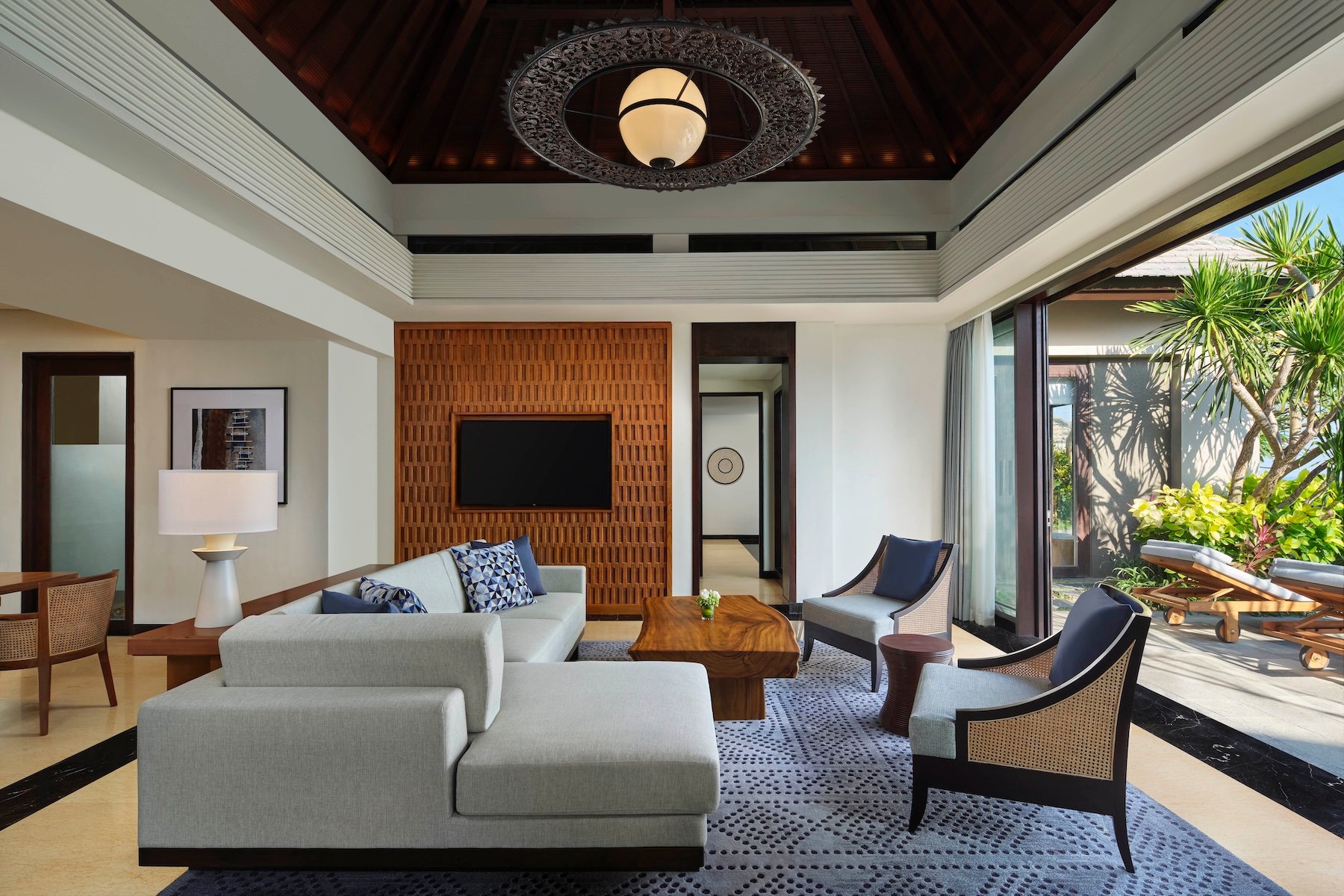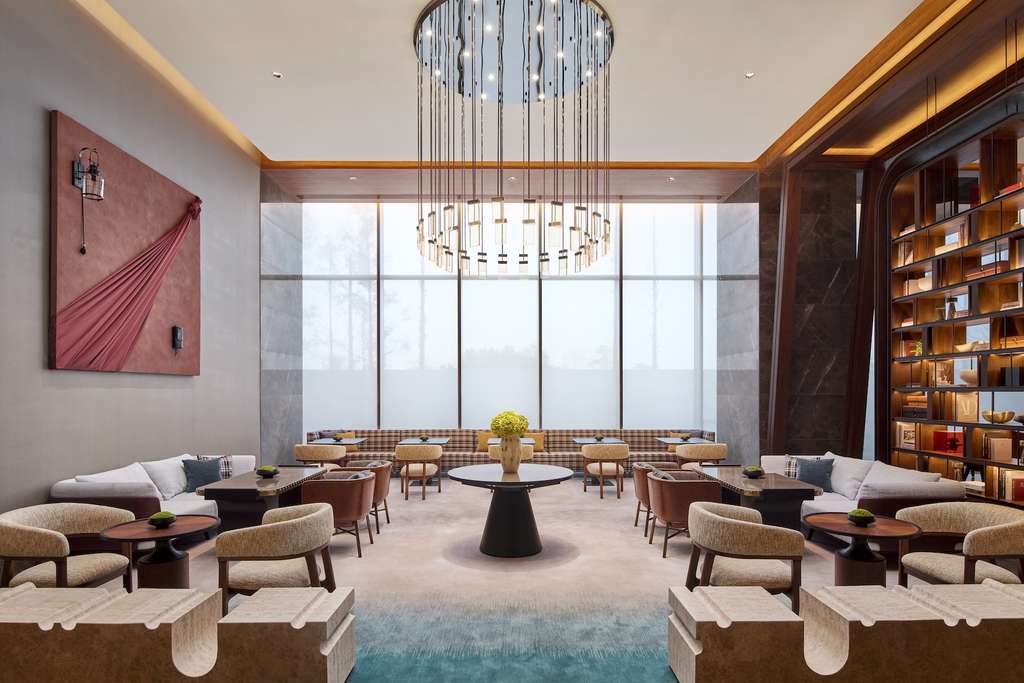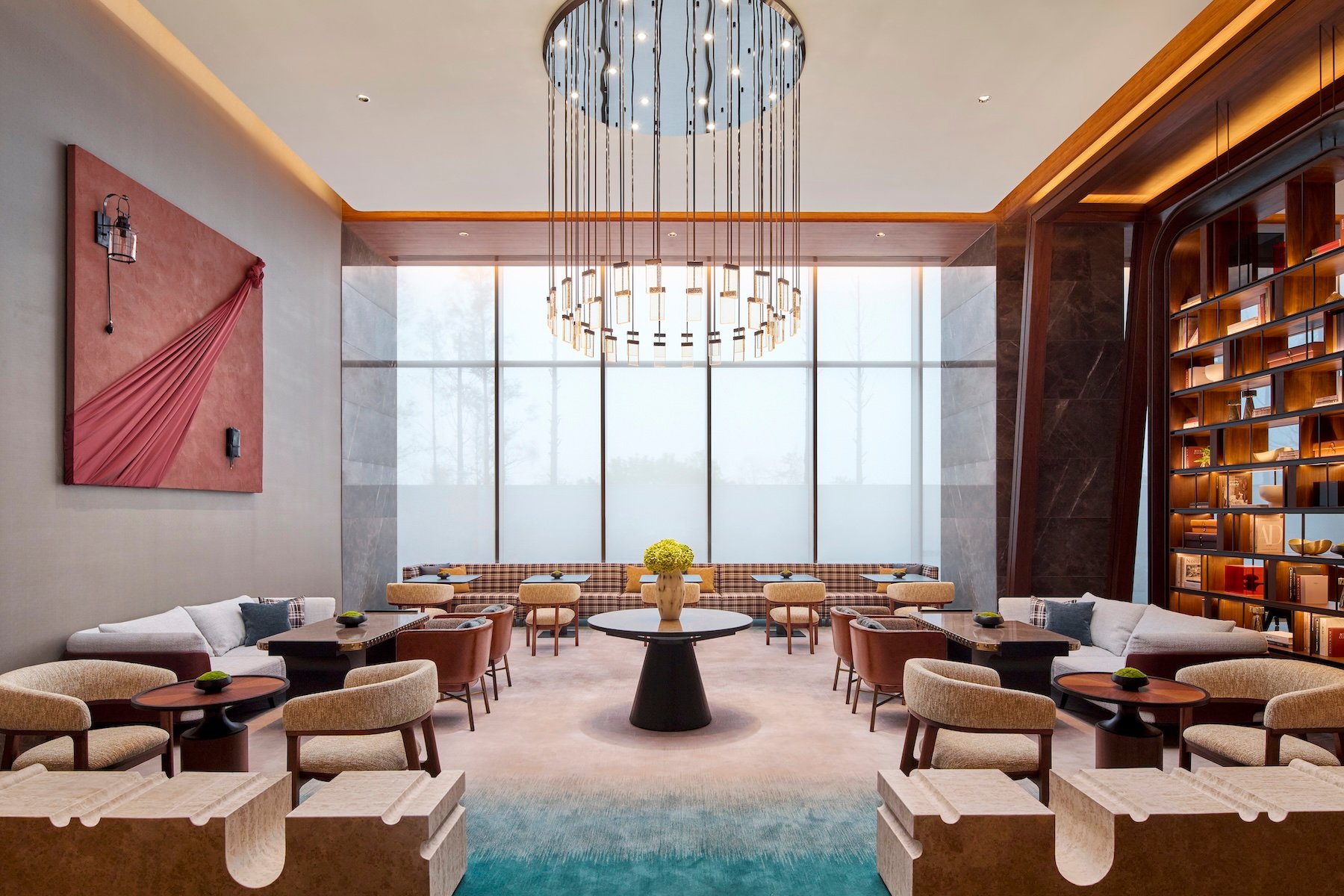SINGAPORE — As 2025 approaches, Wimberly Interiors’ creative leaders share the trends shaping hospitality interior design—each reflecting a shared commitment to innovation, sustainability, and authenticity.
The world of hospitality continues to evolve; so too do the spaces that define it. The guest journey needs to be tailored through environments that inspire, delight, and connect – often on an emotional and neuro-aesthetical level.
Here are the top trends as observed through Wimberly Interiors’ hospitality lens:
EVOCATIVE DESIGN: CREATING ATMOSPHERES WITH EMOTION
Paolo De Simone, Creative Director, Wimberly Interiors SingaporeEvocative Design is the art of creating atmospheres that elicit specific feelings by combining a potent concoction of sensory elements to enhance how a space is perceived and experienced. Instead of focusing solely on aesthetics, Evocative Design treats every material, texture, sound and scent as an instrument in a carefully orchestrated composition.
By harmonizing tactile surfaces, ambient lighting, auditory cues, and fragrance, designers can curate spaces that resonate on a deeper emotional level, tailoring each environment to evoke the exact mood they intend.
For instance, in a luxurious hotel lobby, the design may incorporate polished marble surfaces, soft and plush textiles, and intricate metalwork to convey grandeur and sophistication. A subtle infusion of a rich, signature fragrance enhances this sense of luxury, grounding visitors in an atmosphere that feels both stately and inviting.
By designing for multiple senses, Evocative Design allows spaces to tell a story and influence the emotions of those who enter. The careful pairing of textures, colors, sounds, and even subtle aromas enables each space to feel distinct, memorable, and emotionally engaging—inviting guests to not only see a beautifully curated space but to feel and connect with it fully.
SUSTAINABLE STRATEGIES FOR LASTING IMPACT
Deepu Mahboobani, Studio Director, Wimberly Interiors SingaporeAs designers, we have a direct responsibility to adopt sustainable strategies as much as possible in all our projects. Sustainable strategies in interior design comprise not only thoughtful choices that minimize waste and carbon but also the promotion of local craftsmanship and the engagement with the larger community.
We aim to embrace sustainability with a focus on authenticity and locality, ensuring tradition continues to be celebrated. Repurposing existing furniture and materials especially in renovations and repositioning projects has become a hallmark, giving new life to pieces that tell a story while reducing waste. By collaborating with local craftsmen, designers infuse spaces with cultural heritage, crafting unique and high-quality furnishings that enhance each project’s connection to its surroundings. The use of locally sourced materials not only supports regional economies but also reduces the carbon footprint of transportation, aligning with growing eco-consciousness. Lifespan and durability are critical factors, with materials chosen to withstand time and usage, reducing the frequency of replacement and further conserving resources. Together, these strategies reflect an intentional approach to sustainability in interior design that balances aesthetics, functionality, and environmental responsibility.
TRANSCENDING THE TANGIBLE: FROM SPACES TO EXPERIENCES
Miki Bian, Creative Director, Wimberly Interiors ShanghaiInterior design is headed in the direction where it has transcended from the tangible to an overall experience. Guests go to a destination for escapism; the spaces we design should ultimately convey the care that the hotel invests in their guests. Be it from tailored personalized check-in, efficiency and convenience of services, spaces for ultimate relaxation, or simply novel spaces for unexpected moments of delight, interior designers need to be well equipped with the industry know-how to design for seamlessness in service and operational success, so that the hotel staff can focus on caring for guests through service excellence.
One of the prevailing strategies we use to maximise guest experiential factor is the integration of nature to promote relaxation and comfort. Moreover, the rapid advancement of AI will greatly enhance hotel management and guest experiences, enabling smarter, more digitally integrated environments. Hotels will increasingly adopt intelligent functions, along with services that seamlessly blend virtual and real-world experiences. As designers, we must evolve to meet these shifts.
REVIVING LEGACY: HONORING THE PAST WITH MODERN LUXURY
Margaret McMahon, Global Practice Principal, Wimberly InteriorsThe hospitality design landscape in 2025 is increasingly focused on reviving the legacy of iconic resorts, blending their rich history with modern luxury to meet the expectations of today’s travelers. Guests are seeking destinations that not only tell a story but also invite them to become part of it, merging cultural authenticity with comfort and elegance.
This trend has driven a wave of thoughtful renovations across North America, where timelessly elegant resorts are being reimagined to provide immersive experiences that honor their heritage while introducing a contemporary edge. It is about celebrating the legacy of these properties, while retelling history in a more contemporary, fresh way.
Gone are the days of stark minimalism; instead, 2025 sees the rise of richly textured interiors layered with bold accents, vintage furnishings, and curated elements that reflect the local narrative. The result is spaces that feel authentic yet vibrant, marrying the charm of the past with the sophistication of modern design.
The challenge lies in preserving the essence that draws returning guests while introducing fresh elements to captivate new ones. Part of the experience that the traveler is looking for is to have the hotel itself be part of the journey. That sense of theater and drama within the property has become just as important, offering an immersive, memorable experience that captivates at every turn.
This approach not only reinvents the legacy of iconic resorts but transforms them into dynamic destinations where history, design, and storytelling converge, leaving a lasting impression on every guest.
TEXTURES, JEWEL TONES, AND SCULPTURAL ELEGANCE
Hussain Kamal, Studio Director, Wimberly Interiors Los AngelesHospitality interiors in 2025 will showcase a renewed focus on layering textures and incorporating bold, jewel-toned palettes. Deep greens, earthy oranges, rich golds, and purples will dominate, complemented by classic neutral shades to create a harmonious balance. These color choices evoke both warmth and sophistication, setting the stage for spaces that feel luxurious yet approachable.
Inspiration from luxury retail design is also on the rise, with innovative finishes and textures being developed as artistic applications in interior architecture. These details not only elevate the aesthetic of a space but also introduce a tactile richness that draws guests in.
Furniture is becoming increasingly flexible and sculptural, marrying form and function in ways that cater to the diverse needs of today’s travelers. From reconfigurable seating to dramatic statement pieces, the emphasis is on adaptability without sacrificing elegance. Additionally, multi-experience F&B spaces are transforming hotel environments, offering guests a seamless blend of dining, socializing, and relaxation. These spaces are designed to be immersive and engaging, ensuring that every moment spent within them feels intentional and memorable.
WELLNESS AND WARMTH: A BALANCED APPROACH
Rachel Johnson, Studio Director, Wimberly Interiors LondonHospitality interior trends 2025 are embracing a renewed focus on health, wellness, and comfort. At the heart of this movement lies a careful balance—using color and tone to create soothing environments while incorporating bold, unexpected details to captivate and surprise.
Warm earthy tones, such as lush greens, sweet umbers, and soft neutrals, form the foundation of these designs, establishing a palette that feels grounded and calming. These base colors are then elevated with bespoke furniture and focal details, accented with saturated hues to energize the spaces. The result is interiors that are not only visually engaging but also emotionally uplifting.
Texture plays a crucial role in this trend, with silks, velvets, wools, and linens layered across furniture and accessories to create an eclectic yet harmonious effect. This combination of materials evokes a sense of opulence and care, where every detail contributes to an overarching feeling of thoughtfulness and attention.
Warm, low-level lighting enhances the inviting atmosphere, creating spaces that are both visually striking and inherently cozy. These designs exude a sense of place, offering a comforting yet stimulating environment that reflects the balance of wellness and warmth. This trend is a celebration of tactile luxury, vibrant details, and the emotional resonance of design, promising spaces that are as exciting as they are soothing.
PLAYFUL SOPHISTICATION AND FUNCTIONAL ELEGANCE
Liana Hawes Young, Creative Director, Wimberly Interiors New YorkAs we approach 2025, hospitality interiors are blending functionality with playful sophistication, embracing clever design solutions that enhance both practicality and beauty. One trend gaining momentum is the incorporation of hidden storage, seamlessly integrated into furnishings and architectural details. These innovative solutions allow for clutter-free spaces, maintaining clean lines and a sense of calm that elevates the guest experience.
Another key focus is the use of natural stones with bold veining and rich colors. These materials, whether in countertops, statement walls, or accents, bring a dramatic elegance to interiors while connecting guests to the timeless beauty of nature.
A fresh approach is also emerging with the mixing of vintage and antique pieces in modern spaces, creating a layered and curated aesthetic that feels authentic and full of character. This balance between old and new not only tells a story but also makes each space feel unique and deeply personal.
And finally, yellow is set to shine. I am manifesting it in interiors—it’s happy and beautiful, and we need that in the world. This vibrant hue, especially when paired with chocolate brown, a timeless classic, adds a sense of warmth, optimism, and richness to any environment.
AUTHENTIC STORYTELLING THROUGH LOCAL DESIGN
Kathy Chavez, Studio Director, Wimberly Interiors DallasGuests crave authenticity, and storytelling has become the cornerstone of design. Interior trends 2025 will be about reflecting the soul of a destination through locally sourced materials and artworks, and designs rooted in the history and culture of the neighborhood. By thinking local, we can create spaces that tell stories with real meaning—stories that resonate with guests seeking an immersive, meaningful connection to their destination.
A NEW ERA IN HOSPITALITY DESIGN
Wimberly Interiors’ design ethos remains rooted in creating spaces that honor tradition while embracing the future. From sensory-driven experiences to authentic storytelling, sustainability, and innovation, the future of hospitality design promises to be both inspiring and transformative.
At its heart, it revolves around people—the design approach therefore needs to go beyond pure function to consider humans’ diverse needs, our innate desire to connect, to engage and to form cherished memories.
About WATG
Founded in Honolulu in 1945 by George ‘Pete’ Wimberly, WATG is the preeminent leader in integrated luxury hospitality design. Grounded in rigorous strategy and incomparable domain expertise, WATG creates bespoke, exhilarating and culturally significant destinations.
WATG remains independent to this day with a profound respect for its heritage. Its five studios – Advisory, Master Planning, Architecture, Landscape and Wimberly Interiors – stay true to their values, designing spaces that respect, protect and enhance the natural magic of their surroundings while delivering long-term value for clients and communities.
As of 2023, its global yet local team – representing more than 45 nationalities across offices in Honolulu, Tustin (California), Los Angeles, New York, London, Dallas, Singapore and Shanghai – has designed and delivered over 500 built projects in 170 countries and territories, pushing the boundaries of possibility while delivering enduring client success across the globe. watg.com
About Wimberly Interiors
Since its founding in 2011, Wimberly Interiors – a design studio of WATG – has established itself at the forefront of hospitality, entertainment and residential design. In its tenth anniversary year, the studio was longlisted in Dezeen’s Emerging Interior Design Studio of the Year category. In 2023, Wimberly ranked 4th in the Top 100 Hospitality Giants and 50th in Interior Design Giants.
From high-voltage nightclubs and chic restaurants to grand lobbies of stately hotels and intimate salons of private homes, Wimberly Interiors creates interior experiences that go beyond aesthetics. With a passion for exceptional design, its small but mighty team across New York, Los Angeles, London, Singapore and Shanghai is equal parts collaborator and disruptor – a flair that has led to over 60 awards and accolades, and an impressive portfolio of built work that includes the Belmond Venice Simplon-Orient-Express Grand Suites, the Bentley Suite at the St. Regis New York, EDITION Abu Dhabi, Dream Hotel Downtown New York, Marquee New York, Chroma Seoul, Hotel del Coronado, Park Hyatt Aviara, Bellagio Shanghai, Rosewood Baha Mar, Ritz-Carlton Amelia Island, Kempinski Hotel Jinan, Four Seasons Maui at Wailea, Four Seasons Los Angeles, Hotel 50 Bowery NYC, Viceroy Kopaonik Serbia, Viceroy Ombria Resort in Portugal and more. wimberlyinteriors.com









